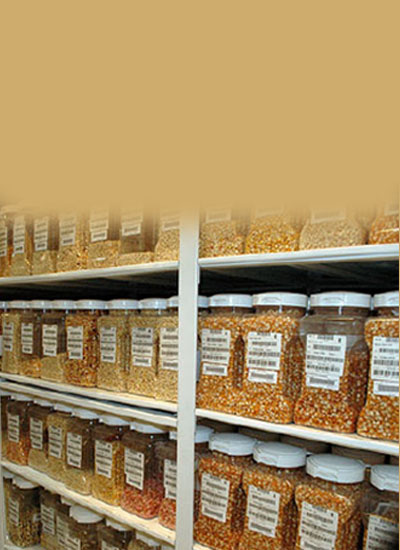

Gene banks are a type of biorepository which preserve genetic material. For plants, this could be by in vitro storage, freezing cuttings from the plant, or stocking the seeds (e.g. in a seedbank). Plant genetic material in a 'gene bank' is preserved at -196° Celsius in Liquid Nitrogen as mature seed (dry) or tissue (meristems).
Accession is the common term given to an individual sample in a gene bank, such as a distinct species or variety.
In an effort to conserve agricultural biodiversity, gene banks are used to store and conserve the plant genetic resources of major crop plants and their crop wild relatives. There are many reasons to store seeds. One is to have available the genes that plant breeders need to increase yield, disease resistance, drought tolerance, nutritional quality, taste, etc. of crops. Another is to forestall loss of genetic diversity in rare or imperiled plant species in an effort to conserve biodiversity ex situ. Seed banks are considered seed libraries, containing valuable information about evolved strategies to combat plant stress, and can be used to create genetically modified versions of existing seeds. The work of seed banks spans decades and even centuries. Most seed banks are publicly funded and seeds are usually available for research that benefits the public.